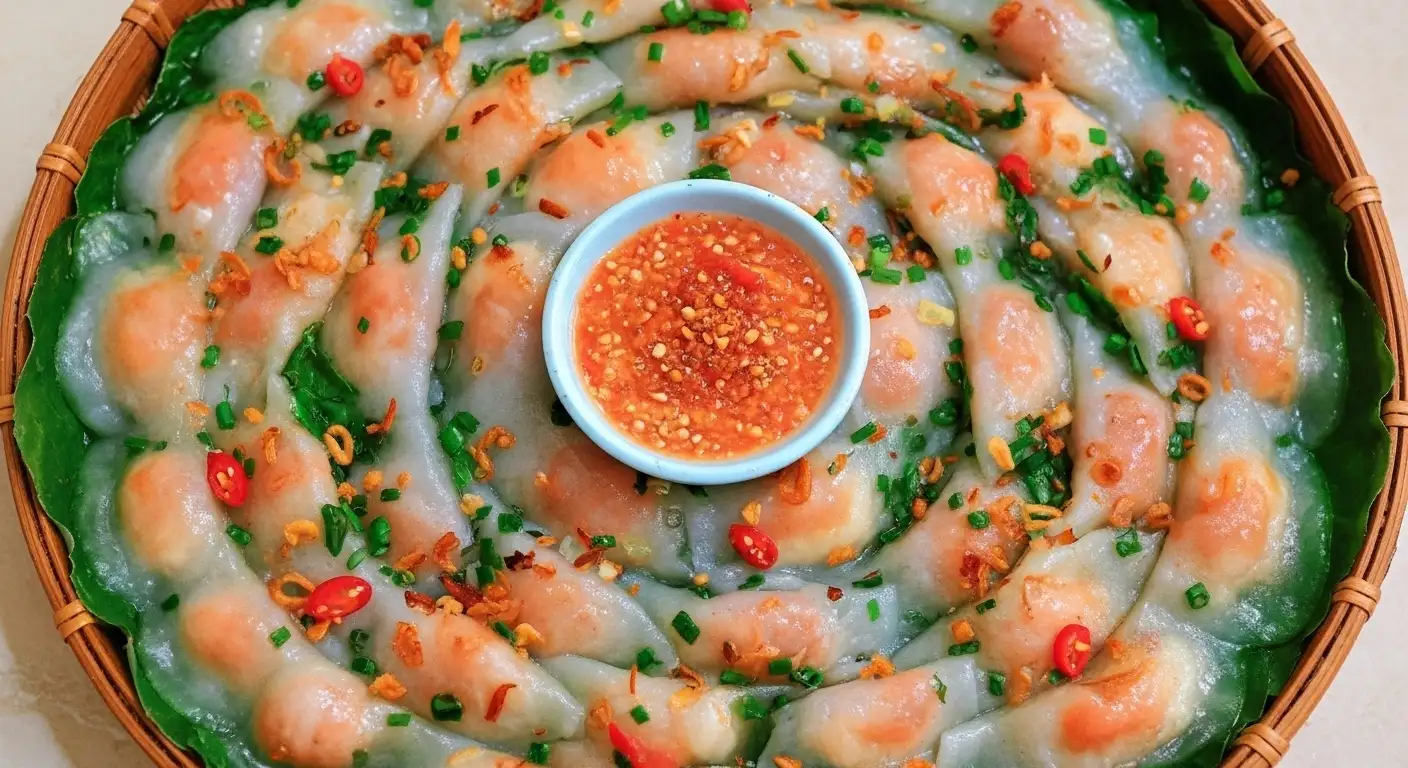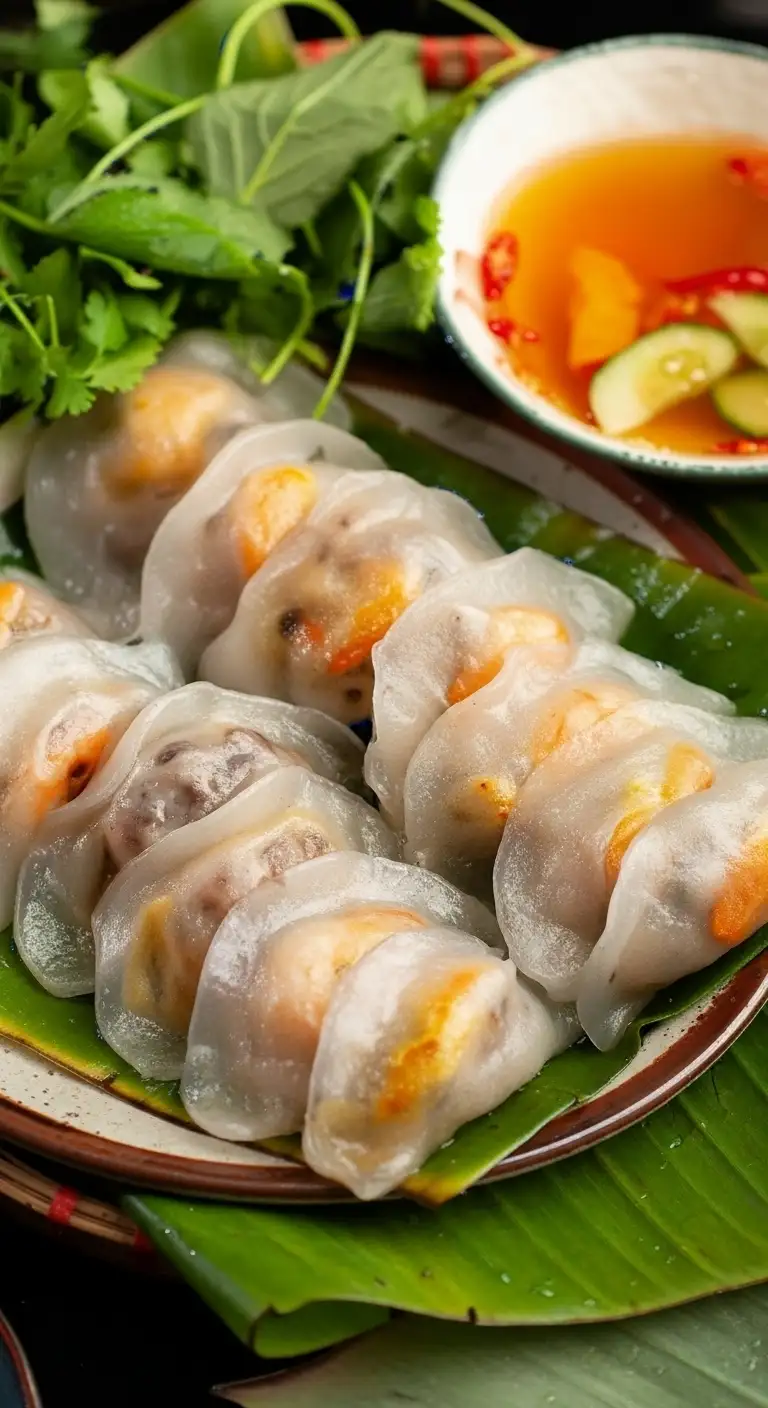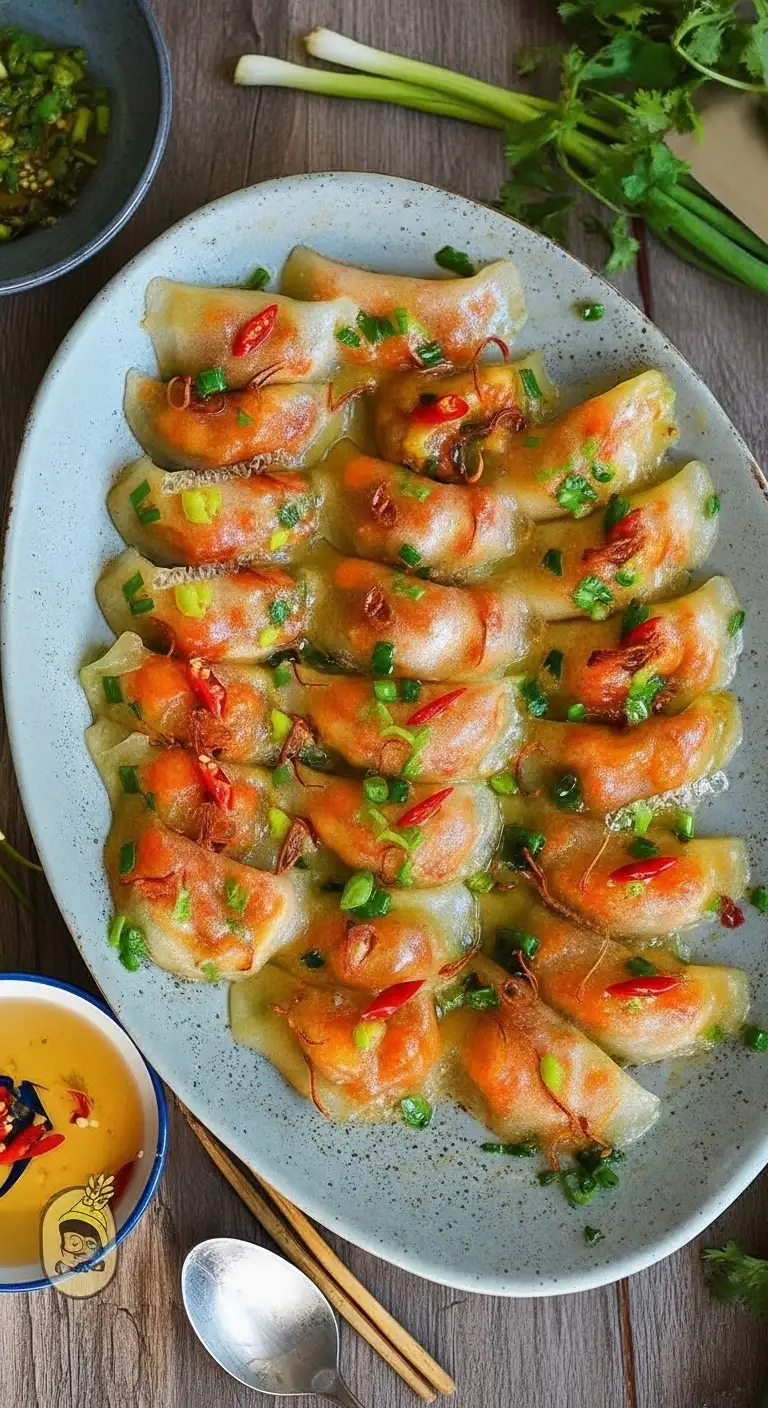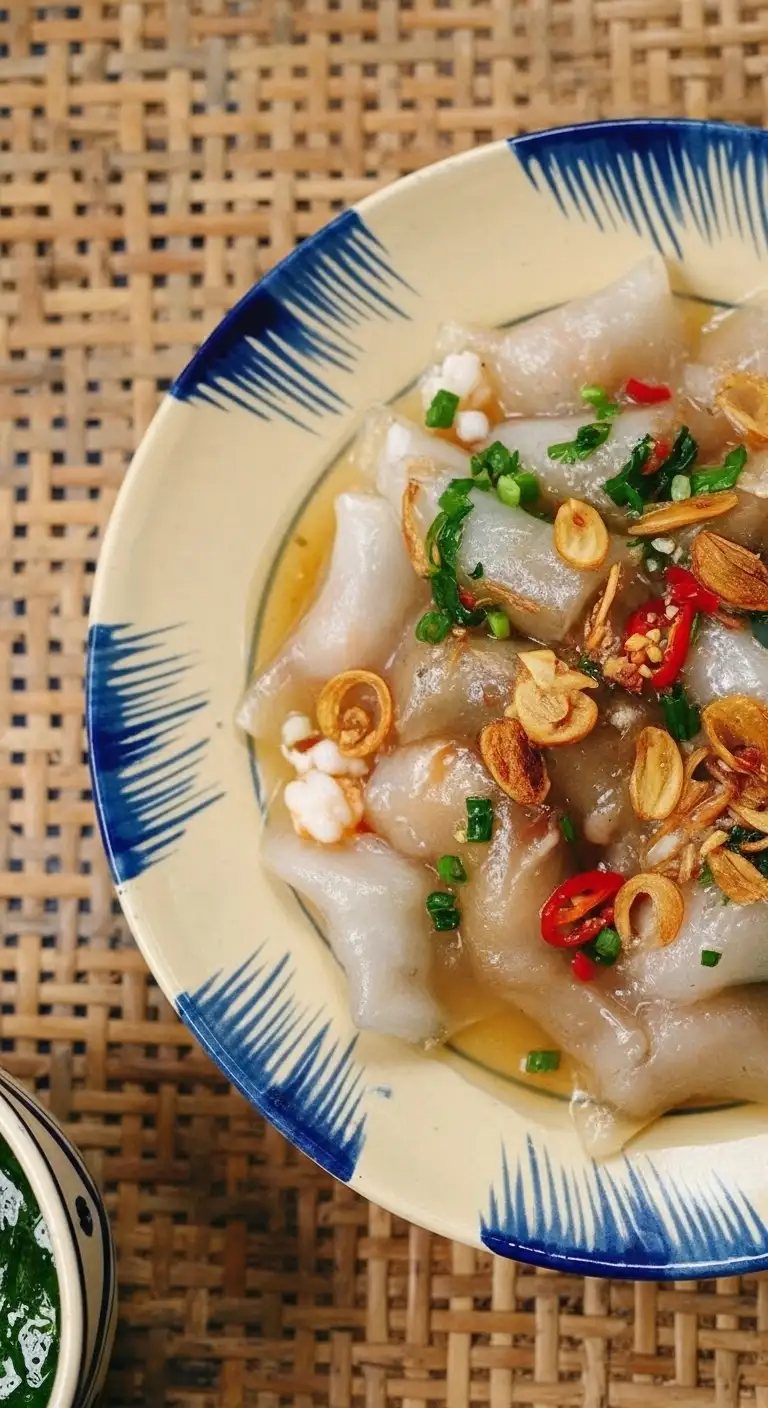Bánh Lọc (pronounced Ban Lok) is a culinary jewel of Vietnam, a delightful small dumpling renowned for its uniquely chewy texture and visually striking translucent appearance. Originating from the former imperial city of Huế in Central Vietnam, this dish perfectly embodies the region’s refined and intricate cuisine. It is a harmonious marriage of simple ingredients elevated by sophisticated technique and bold, salty-spicy flavors.

Bánh Lọc: The Basics
The Name and Appearance: The full name is often Bánh Bột Lọc (literally “clear flour cake”). The name derives from the cake’s wrapper, which is made from tapioca starch (bột năng or bột lọc) that is “filtered” to purity. When cooked, the starch becomes completely transparent, giving the dumpling its signature “crystal” look, allowing the vibrant filling to show through.
The Signature Texture: The key characteristic of Bánh Lọc is its texture: ultra-chewy, springy, and slightly sticky—a satisfying sensation known as dai in Vietnamese.
The Filling: The traditional filling is simple yet rich:
Tôm (Shrimp): Often braised in a light sauce with aromatics and annatto oil (for color), with the shell sometimes left on for flavor and visual appeal.
Thịt Ba Chỉ (Pork Belly): A slice of savory, fatty pork belly that provides a comforting contrast to the chewy wrapper.
Accompaniments: Bánh Lọc is always served hot and is garnished with fried shallots (hành phi) and a drizzle of scallion oil (mỡ hành) for aroma and richness.
Types and Variations of Bánh Lọc
The preparation method determines the two main styles of Bánh Lọc, which offer slightly different experiences:
A. Bánh Bột Lọc Lá (Wrapped in Leaf)
Preparation: This is the most traditional, originating from the imperial city of Huế. Small portions of the tapioca dough and filling are individually wrapped in banana leaves (lá chuối). The leaves are sealed and then steamed.
Experience: The banana leaf wrapping imparts a subtle, fresh, earthy aroma to the dumpling as it steams. The dumplings are often served still wrapped, usually tied together in pairs.
B. Bánh Bột Lọc Trần (Nude/Bare)
Preparation: The dumplings are shaped into small, half-moon crescents and cooked directly by boiling in water until they float and become translucent. They are then drained, rinsed, and coated in scallion oil to prevent sticking.
Experience: These dumplings are often slightly softer and more slippery than their leaf-wrapped counterparts. They are served loose on a plate or sometimes in a small bowl of hot broth, offering a cleaner taste profile.
C. Other Variations:
Fried Bánh Lọc (Bánh Bột Lọc Chiên): In some Central provinces like Quảng Bình, a third variety exists where the Bánh Lọc is pan-fried or deep-fried until the surface is crispy, creating an exciting contrast between the crunchy exterior and the chewy interior.
Filling Variations: While shrimp and pork are standard, some regional cooks might add wood ear mushrooms or bamboo shoots for extra texture and flavor.
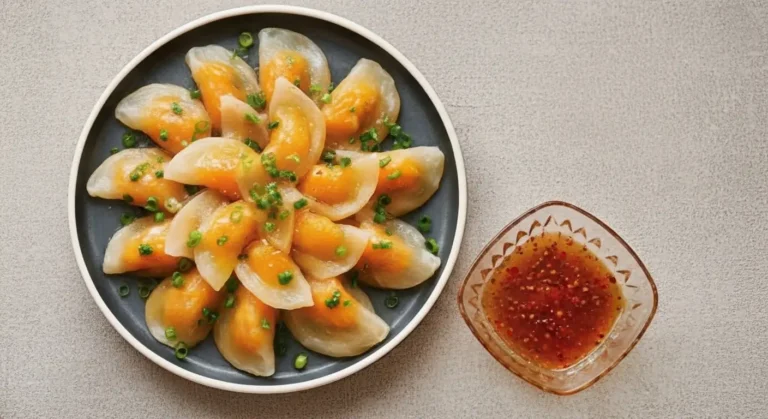
How to Eat Bánh Lọc
Bánh Lọc is a snack or appetizer, not a main course, and is designed to be eaten in a single bite or two.
Unwrap (If Necessary): If served Bánh Lọc Lá, carefully unwrap the banana leaf to reveal the clear, plump dumpling inside.
The Dipping Sauce (Nước Chấm): The most crucial component is the dipping sauce. It is almost always a version of the classic Vietnamese Nước Mắm Pha (fish sauce), but the Huế style is typically saltier, tangier, and often noticeably spicier with freshly chopped chili, reflecting the Central region’s preference for strong, bold flavors.
The Technique: Pick up the dumpling with chopsticks, dip it generously into the spicy fish sauce, and eat. The hot, rich filling and chewy wrapper are perfectly balanced by the sharp, salty, and spicy dipping sauce.
Regional Differences: Central, North, and South
Bánh Lọc is a definitive specialty of the Central Region, particularly Huế, and its presence and preparation vary significantly as you travel across Vietnam.
| Region | Primary Focus and Popularity | Key Differences in Preparation/Serving |
|---|---|---|
| Central (Miền Trung - Huế, Quảng Bình) | Heartland of Bánh Lọc. This is the original home. It is served with great care and is highly popular as a street food, often alongside other small bánh (cakes) like Bánh Nậm and Bánh Bèo. | The dumplings are traditionally small, thin-skinned, and highly translucent. The dipping sauce is characteristically salty and spicy, a hallmark of Huế cuisine. Both Bánh Lọc Lá and Bánh Lọc Trần are common, with some areas offering a fried version. |
| South (Miền Nam - Saigon) | Widespread, but Imported. Bánh Lọc is popular but considered a specialty from Huế. Restaurants serving it often brand themselves with the Huế name to emphasize authenticity. | The preparation generally follows the Huế style, though the dipping sauce may sometimes be slightly sweeter than the intense Central version, aligning with the Southern preference for a sweeter profile. |
| North (Miền Bắc - Hanoi) | Less Common/Localized Adaptation. Bánh Lọc is less common in the traditional Hanoi culinary scene, which prioritizes soups and rice-based dishes. | When found (often served as Bánh Bột Lọc Trần), the dumplings may sometimes be thicker-skinned and less translucent. The accompanying dipping sauce is usually a milder, more balanced Nước Chấm, with less emphasis on the intense saltiness and spiciness of the Central style. Some Northern versions might also feature a more diverse filling, including wood ear mushrooms. |
